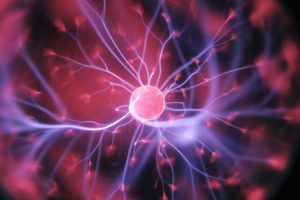Parmin Sedigh is a 16-year-old who is passionate about stem cells, developmental biology, and science communication. She shares her love for the field by writing easy-to-understand articles on Medium and creating YouTube videos. She’s also the Director of Writing at Superposition, a non-profit focused on closing the gender gap in STEM, and is working on zebrafish regeneration with researchers at the University of Guelph. You can find her on LinkedIn or @ParminSedigh.
This blog post was reviewed by Dr. Kateri Moore.
How can we use stem cells to treat heart disease, neurodegenerative diseases, or hematological diseases? These are all crucial questions that are being researched extensively by scientists. But one has to wonder—what role do stem cells play in psychiatric disorders, if at all, and how are stem cells being applied to better understanding and possibly treating them? That’s the question I’ll be addressing today, with a particular focus on schizophrenia.
Why schizophrenia specifically? There’s quite a lot of research using stem cells to study this disease. It’s quite common too and affects roughly one per cent of the population globally. In addition, it has very drastic effects on patients’ lives. For instance, patients are at a higher risk for suicide, substance abuse and homelessness. The disorder also has a strong genetic component.
This brings me to the first study we’ll be exploring involving stem cells and schizophrenia. Researchers in this study found that the gene unc-51-like kinase 4 (ULK4) contributes significantly to normal brain development and that its knockdown plays a role in schizophrenia.
“How does this relate to stem cells?” you may be asking? It was found that the ULK4 gene regulates the proliferation of neuronal progenitors. These progenitors contribute to the neural stem cell pool and ULK4 also controls the expansion of the pool of stem cells early on in development. As well, ULK4 knockdown leads to reduced proliferation of neural stem cells. Lastly, researchers found that ULK4 was localized in neural stem cells.
Another way in which stem cells are being applied is in better understanding psychiatric disorders through their use in disease modelling. While animal models, such as mouse models, are common for modelling disease, they do a poor job of modelling complex rare genetic variants, many of which contribute strongly to psychiatric disorders like schizophrenia.
Here’s where stem cells come in: Human stem cell models can be used to model disease in vitro so that certain treatments can be applied and so the disease can be studied in a way that’s more relevant to humans. One approach to disease modelling involves induced pluripotent stem cells (iPSCs)—stem cells coming from fully differentiated adult cells that are reprogrammed back into pluripotent stem cells. In this method, skin biopsies are taken from schizophrenia patients, reprogrammed to become iPSCs, and then put through a two-stage differentiation process to create neurons. At first, the iPSCs are differentiated to neuronal progenitor cells (NPCs) and then into neurons.
Before we learn more, it’s critical to mention that these stem cell models tend to be immature in that they do not model adult brains. Importantly, schizophrenia often presents itself in early adulthood. But based on work from Brennand et al., we know that these models most closely resemble brain tissue from a fetus in the first or second trimester. This means these studies are actually looking at predisposition to schizophrenia and not the disease as it normally presents itself in adults.
This iPSC model has led to many findings around the difference between neurons and NPCs in controls versus schizophrenia patients. For instance, it was found that NPCs from patients showed aberrant migration as opposed to controls. Digging more deeply into this finding, the lab of Dr. Kristen Brennand found that microRNA-9 (miR-9) was strongly linked to this migration issue in NPCs. Even more excitingly, when miR-9 was overexpressed in patient NPCs, normal migration patterns were seen. They also found that, on average, patients had less miR-9 than controls.
These same in vitro disease models can also be used for screening drugs. Unfortunately schizophrenia is not currently treatable, but testing drugs in vitro is a valuable tool for finding what works best, and iPSC models are great for seeing their effects on human cells derived from patients. Using these models, researchers found reduced neuronal connectivity in schizophrenia patients compared with controls. They then cultured the cells with a drug called loxapine for three weeks and saw improved connectivity in patients’ cells while some other drugs did not show the same results.
Another model we’ll be discussing—organoids, or more specifically cerebral organoids—is one that was recently used in a study in Molecular Psychiatry by Notaras et al. Organoids are 3D models which amplify the benefits of 2D human cell cultures and more closely recapitulate the human body. This model also used patient-derived iPSCs, but instead created organoids. Researchers working on this study found issues relating to the progenitor cell population similar to previous studies, namely that their survival was altered in patients and that there were fewer neurons in the cortical region of the patient model.
In summary, stem cells contribute greatly to the field of psychiatric disorders whether it’s in the form of disease modelling, drug screening, or being linked to certain disorders. We still have much to learn about this field and stem cells will certainly aid us in doing so.
Guest
Latest posts by Guest (see all)
- Regenerative immunotherapy: Hope for chronic autoimmune diseases - September 16, 2025
- Canada’s regenerative revolution: Why AI is the catalyst - September 4, 2025
- Summer by Design: A launchpad for future entrepreneurs and industry scientists - August 14, 2025







Comments